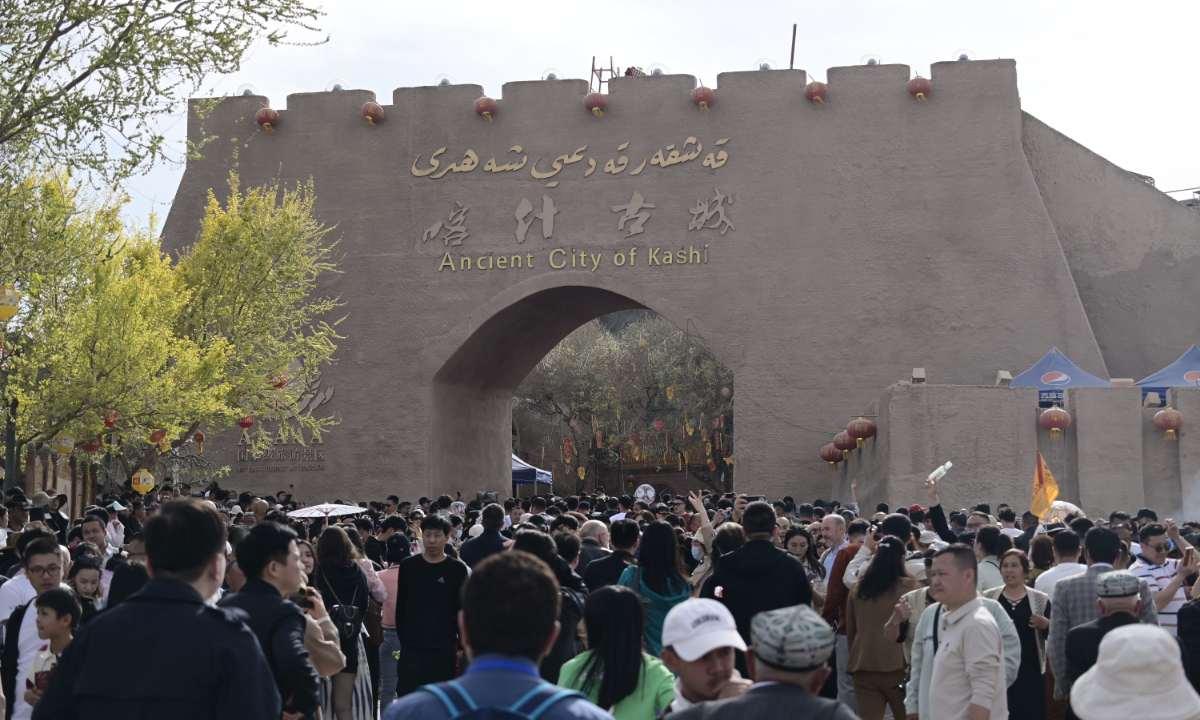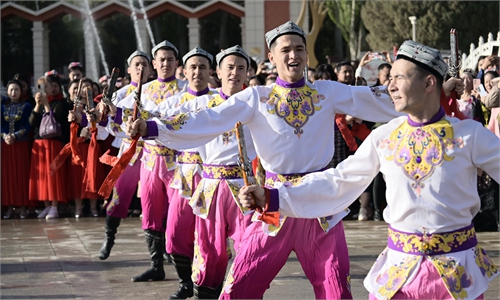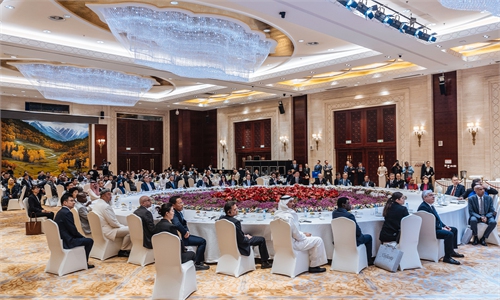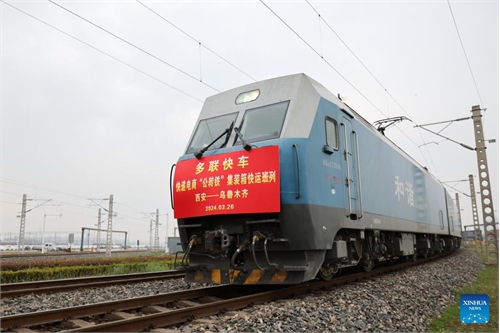
The Ancient City of Kashi on April 10, 2024 Photo: Tao Mingyang/GT
As the first light of dawn broke over the Kashi City, Northwest China's Xinjiang Uygur Autonomous Region, the air was already filled with the sweet scent of freshly baked pastries and the melodious calls to prayer for the Eid al-Fitr on April 10, marking the end of the Islamic holy month of Ramadan.
The streets, usually bustling with merchants and artisans, fell silent for a moment as the community gathered for the Eid al-Fitr morning prayers. But as the sun rose higher, a wave of jubilation washed over People's Square, bringing with it the vibrant spirit of celebration among people in various ethnic groups living in Kashi City.
Behind the harmony of local society lies the robust economic development and governance of religion in Xinjiang, through measures targeted at boosting local industrial, agricultural modernization and new energy, transforming the landlock region into a frontier for the Belt and Road Initiative (BRI).
Countries in Central Asia, West Asia and even further afield are sharing in the development opportunities as Xinjiang marches toward opening up and industrial upgrade.
Gate to the west
As one of the most important nodes of the BRI, the starting point of the China-Pakistan Economic Corridor and the China-Kyrgyzstan-Uzbekistan railway, Kashi City has five land ports connecting eight neighboring countries and acts as the beachhead for transporting goods across the Eurasia continent.
Established in 2014 and coming online in 2015, the comprehensive bonded zone in Kashi City is being built as a logistic distribution hub and manufacturing center targeting Central and South Asia, and is also facilitating the cross-border flow of cargo flow across the region.
Muhammad Riaz Burki, a reporter from the Pakistan Television Corporation, said after his visit to the bonded zone that Pakistan neighbors Xinjiang, and the Gwadar Port is the closest sea port to Kashi. "Pakistan will embrace large development opportunities if more commodities produced in Xinjiang and exported to the world via the China-Pakistan Economic Corridor," said Burki.
2023 marked the 10th anniversary of the launch of the China-Pakistan Economic Corridor. As a flagship project under the BRI, China and Pakistan have reached series of cooperation agreements covering ports, transport infrastructure, energy and industry.
In the first quarter of 2024, the foreign trade volume of Kashi City reached 14.21 billion yuan ($1.96 billion), jumped by over twofold year-on-year, ranking second in Xinjiang, according to Kashi customs.
Notably, Kashi City's foreign trade with BRI partnership countries hit a milestone 13.03 billion yuan during the same period, up 89.4 percent year-on-year.
Tech-driven transformation
Nestled at the edge of the Taklamakan Desert in Xinjiang, the second largest desert in the world, which lends Korla City a unique, arid charm. However, experienced local farmers have built the Korla City agricultural industry into one famous for delicious fresh fruit.
The Oasis Future Farm located in Korla City now has realized mechanization throughout the whole planting process of a 5,000-mu-area (333.33 hectares) for cotton and wheat by using equipment designed for seeding, irrigation, monitoring and harvest, as well as the BeiDou Navigation Satellite System.
Xiong Dazhen, a representative from the farm, who has been living in Kazakhstan for six years researching agricultural planting, told the Global Times that the farm also provides planting services to local farmer by charging service fees of three yuan per mu.
"Our technology-based smart agricultural solutions can predict precise time slots for seeding, irrigating, using fertilizers and pesticide, harvest, and making preparation for extreme weather," Xiong explained, noting that the solution can cut 500 yuan of plating costs off each mu of land, lift yield by 33 percent and 40 percent of output value.
Xinjiang's other famous industrial crop is cotton, which support the development of the local textile industry.
Lihua Textile Co in the Yuli County of the Bayingolin Mongolian Autonomous Prefecture of Xinjiang equipped with world's leading textile machinery and only 26 workers are required to produce 10,000 spindles of yarn using locally produced cotton.
Jia Chunsheng, a representative from the company, explained that the factory can produce 55,000 spindles of 6,000 tons of yarn each year, and has set up a cooperative textile talent training center in conjunction with the vocational school within the prefecture, aiming to upskill workers and lift incomes.
Key to prosperity
According to Xinjiang's Government Work Report for 2024, the GDP growth rate was set around 6.5 percent, and the autonomous region will further enhance the development of new energy, new material, energy, agriculture and tourism.
Hussein Askary, vice chairman of the Belt and Road Institute in Sweden, told the Global Times that Xinjiang is going to become very important to the future development of the BRI, as it bridges goods from other parts of the Eurasia continent
"Now I see there will be more industries in Xinjiang are dedicated to exports, and will provide technology, goods, machines for countries in Central and West Asia, becoming a more important role which is not only a bridge," Askary said.
In the first two months of 2024, Xinjiang's foreign trade stood at 63.69 billion yuan, increasing by 51.4 precent year-on-year, according to a report by Xinjiang Daily at the end of March.
Exports of "the new three" - electric vehicles, lithium batteries, photovoltaic products - increased by 110.2 percent year-on-year during the period, becoming a major part of Xinjiang's dynamic foreign trade, said the report.
Askary also pointed out that the development model of Xinjiang is important for nations in West Asia, because those nations are plagued by security and arid problems, and noting that Xinjiang could share more experience about poverty reduction and desert control.



